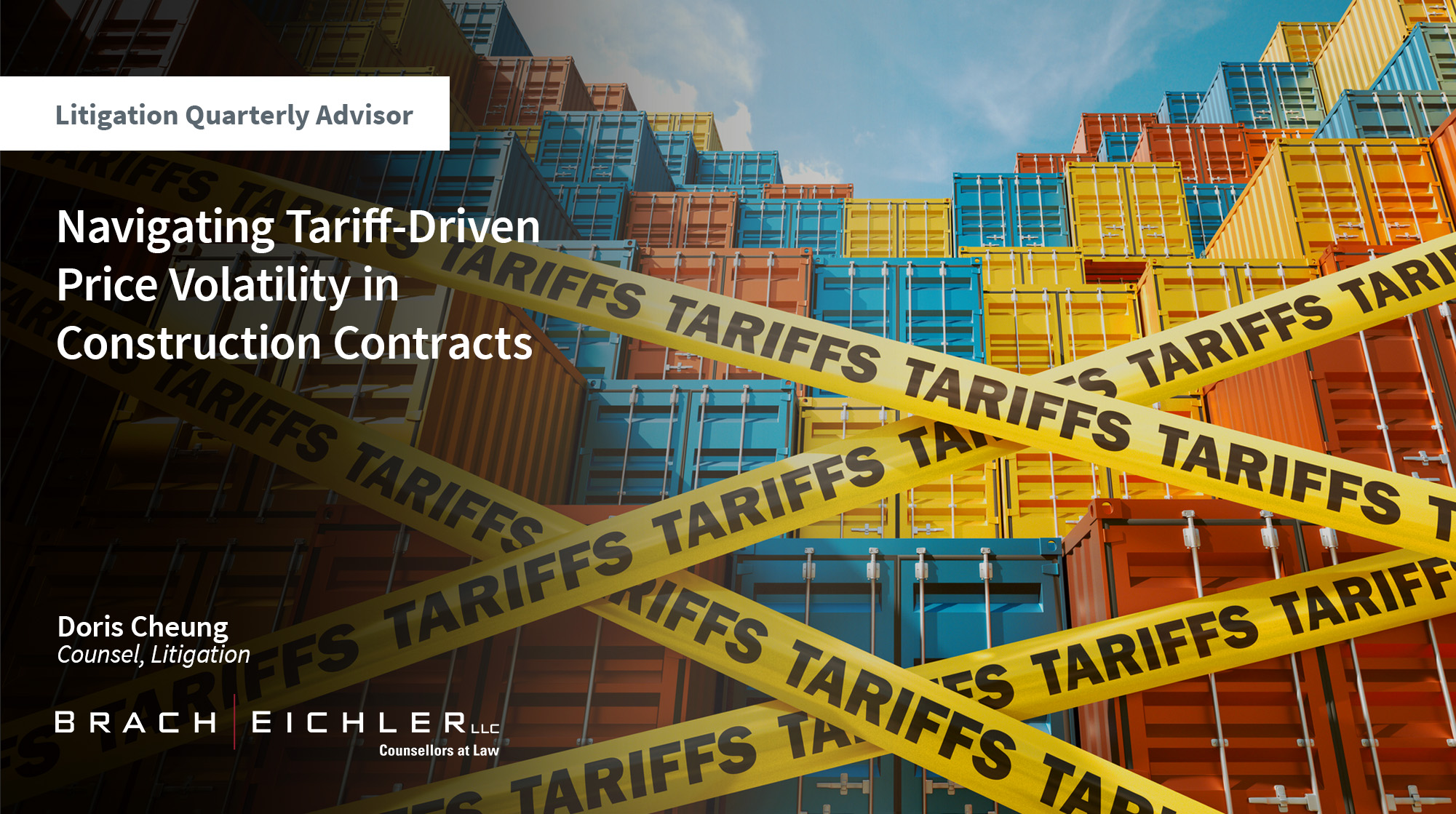NAVIGATING TARIFF-DRIVEN PRICE VOLATILITY IN CONTRACTS

10/1/2025
In the first half of 2025, the U.S. economy was significantly influenced by escalating trade tensions and the implementation of new tariffs. The continuously fluctuating landscape of U.S. tariffs—particularly on materials such as Canadian steel and lumber—has introduced an added layer of uncertainty for many industries, including the construction industry, whether as an owner, general contractor, or subcontractor. Tariffs fall under external economic factors, but increasingly play a large role in determining the price of goods and services when entering into a contract or preparing a bid or proposal.
Very few businesses can absorb the unexpected costs of tariffs. Tariffs can also contribute to material delays in the supply chain and in project schedules, which often translate into claims of breach and tangible losses such as delay damages and indemnification risks. These disruptions are felt across the spectrum, but skillful negotiation and forward-looking contract drafting can apportion the economic pain of unexpected tariffs, or at least grant flexibility on how to mitigate your risks.
One way to alleviate tariff risks is an escalation clause. An escalation clause is a provision that allows a party to a contract to obtain payment for unforeseen increased costs, and in the construction context a contractor or subcontractor can submit a change order, in the event of a significant change in price or procurement of materials due to external unforeseen factors. For example, a simple escalation clause may look like the following:
Several important considerations should be taken into account. The example above utilized a percentage-based trigger, but in certain situations, such as contracts exceeding $10 million, where each percentage point may represent a hundred thousand dollars in potential exposure, it may be more appropriate to utilize a specific dollar-value threshold instead.
Alternatively, an index-based cost adjustment threshold may be more appropriate and provide more clarity on how the risk of price increases is allocated. An index-based cost adjustment uses a predefined index or formula to adjust the cost of a project based on the changes in the market prices of certain items. The U.S. Bureau of Labor Statistics issues a Consumer Price Index (CPI) that reflects the fluctuations in the market. It is calculated as the weighted average price of a market basket of consumer goods and services. Index based cost adjustments are viewed as standardized and neutral.













